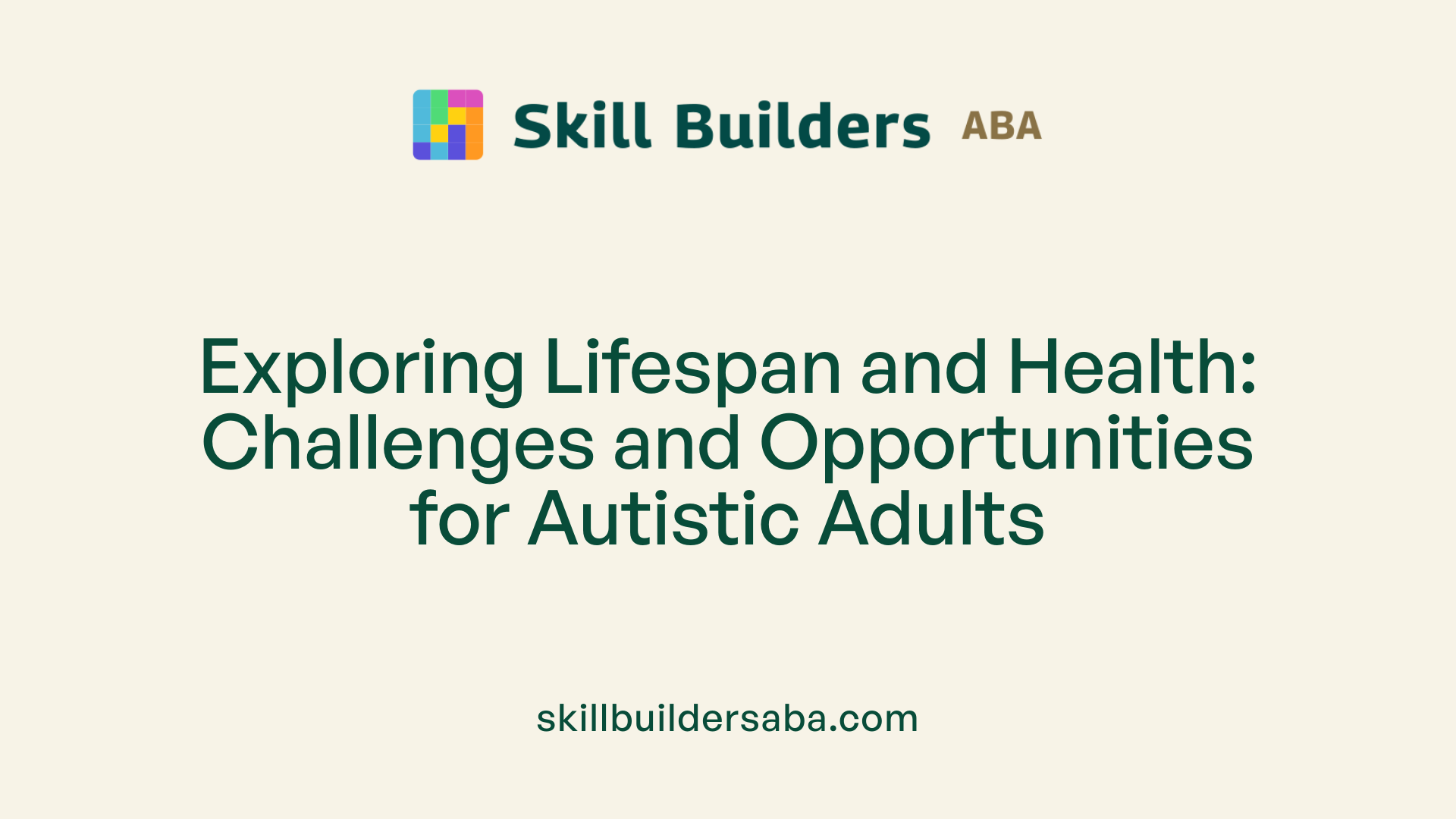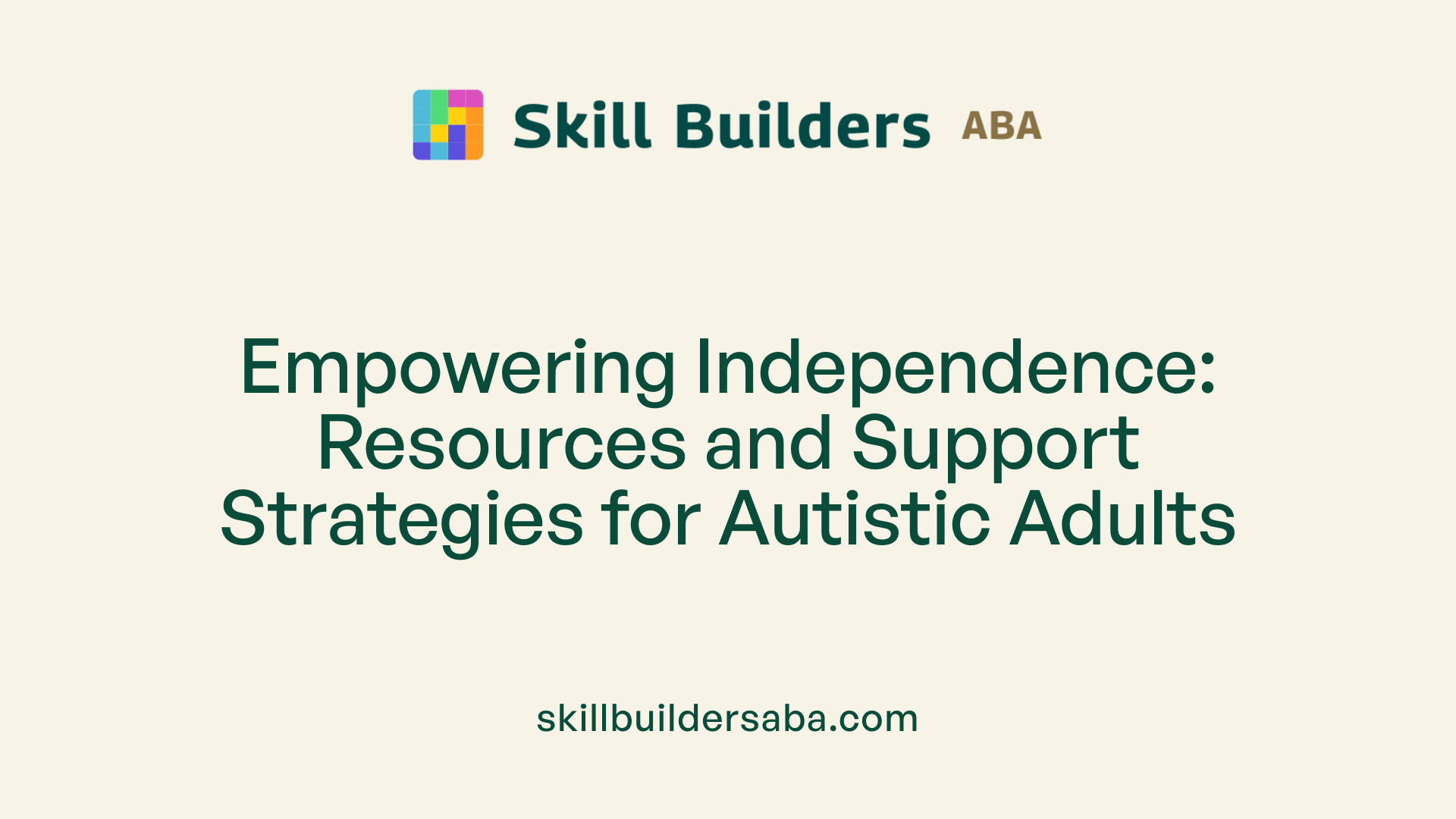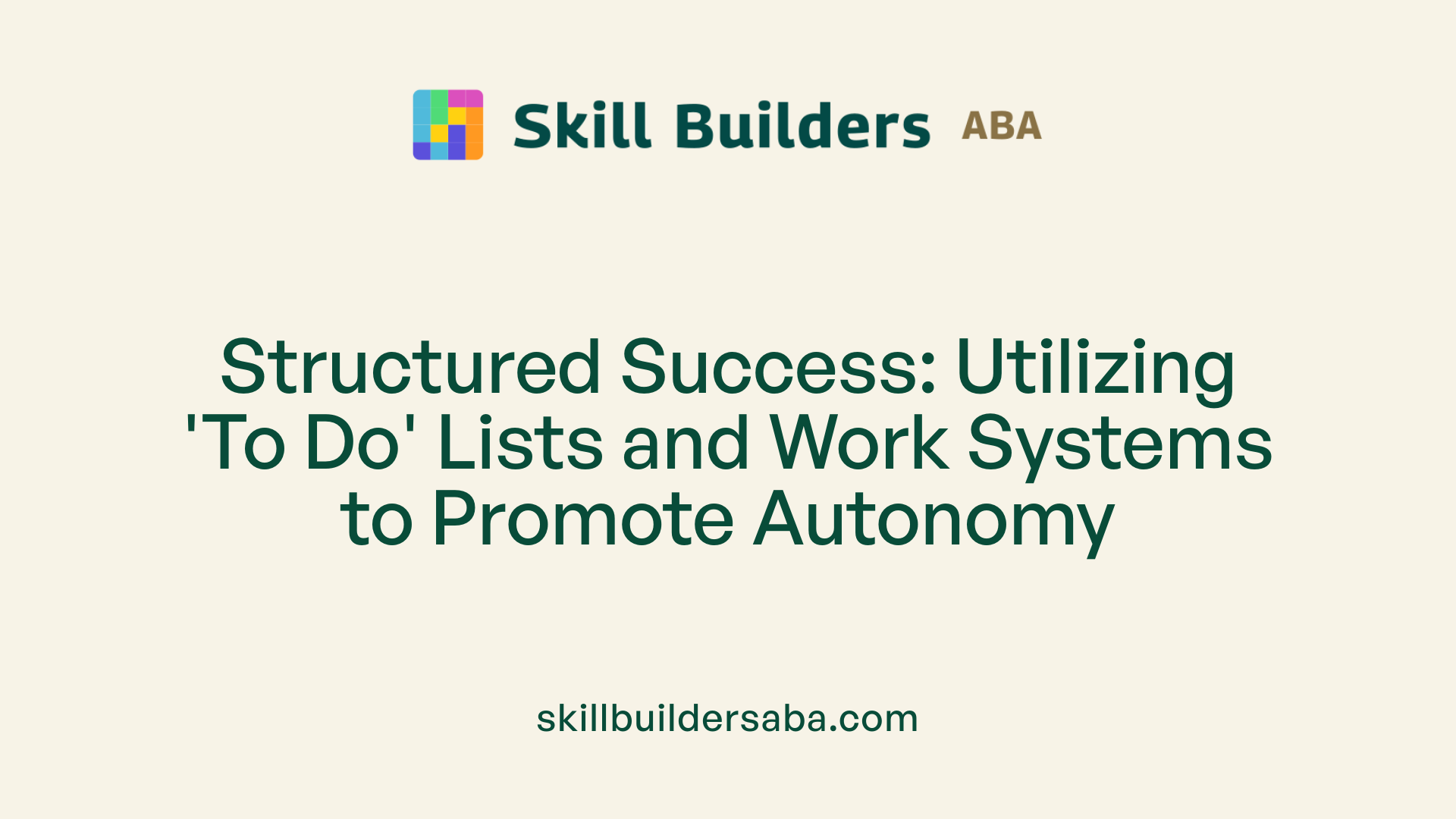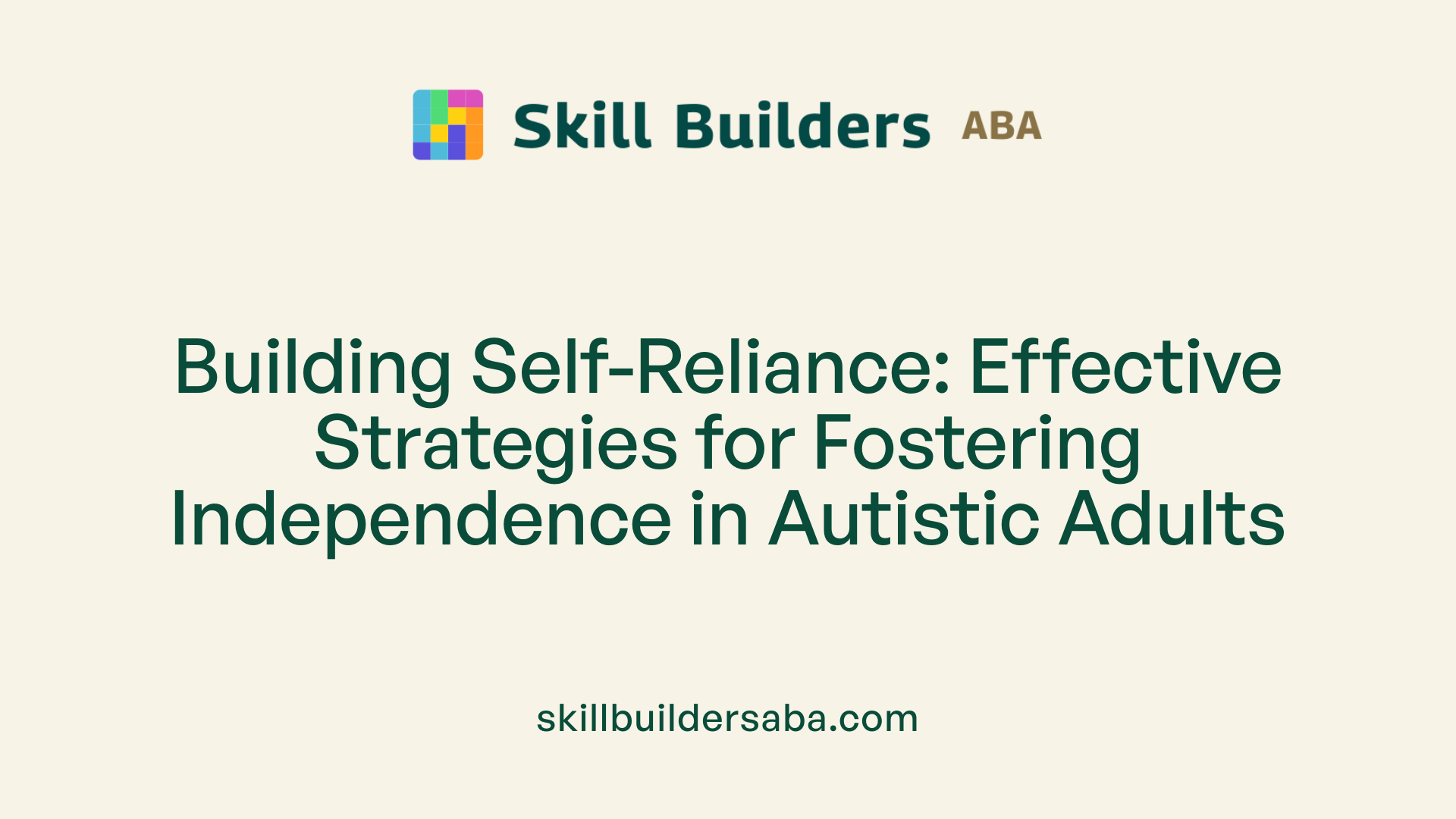Building independence in older autistic individuals
Support Systems and Strategies for Autonomous Aging in Autism

Enhancing Quality of Life for Autistic Adults Through Independence
Building independence in older autistic individuals is a multifaceted process that involves tailored support, skill development, and systemic resources. As individuals with autism transition into adulthood and aging, the focus shifts towards fostering autonomy in daily living, community participation, and mental well-being. Addressing the varied challenges faced by this population requires comprehensive approaches that integrate practical skill-building, environmental modifications, and advocacy. This article explores effective strategies, resources, and interventions designed to promote independence among autistic adults, emphasizing lifelong development and systemic support.
Understanding Lifespan and Health Considerations for Autistic Adults

What is the typical lifespan of individuals with autism, and what health considerations are involved?
Research indicates that autistic individuals tend to have a shorter lifespan compared to the general population. The average age at death for autistic adults ranges from approximately 39 to 58 years. Several health factors contribute to this reduced lifespan.
One major concern is the presence of co-occurring health conditions. Many autistic adults also experience medical issues such as epilepsy, heart problems, and genetic disorders like Down syndrome. These conditions can complicate health management and impact longevity.
Safety risks are another significant aspect. Autistic individuals are at increased risk of accidents, including drowning and wandering, which can lead to injury or death if not properly managed. Mental health challenges also pose threats; conditions like anxiety and depression are common, and studies show elevated risks of suicidal ideation and behaviors.
Support systems, early intervention, and fostering independence can influence health outcomes. When individuals receive comprehensive healthcare, mental health support, and safety measures, their chances of living longer improve.
Overall, addressing health disparities, enhancing access to care, and promoting safety and mental well-being are essential steps toward increasing lifespan and quality of life for autistic adults. Vigilant health monitoring, supportive environments, and community resources play pivotal roles in supporting their longevity.
For additional information, searching "autism lifespan health considerations" can provide further insights into this topic.
Resources Facilitating Independence and Well-Being in Autistic Adults

What resources and guidance are available to support independence and well-being among autistic adults?
Supporting autistic adults in achieving independence involves a variety of resources and guidance tailored to meet their individual needs. These include structured community programs and specialized organizations that offer practical assistance and lifelong support.
One notable resource is the DDS Independent Living Program, which helps adults develop essential life skills and access community services. The Autism Housing Network provides housing options suited to different levels of independence, from supported living to fully independent apartments. Additionally, state initiatives like California’s Self-Determination Program enable adults to make choices about their living arrangements and services, fostering autonomy.
In everyday settings, visual aids such as schedules, checklists, and 'to do' lists play a crucial role in teaching daily routines, self-care, and safety skills. Communication tools, including AAC devices, PECS, and sign language, help individuals express their needs and advocate for themselves.
Evidence-based methods like role-playing, hands-on training, and natural environment teaching are frequently utilized in real-world contexts to teach vital skills such as money handling, community safety, and household chores.
These resources and strategies work together to empower autistic adults, enhancing their capacity to live independently, participate actively in society, and improve overall quality of life.
Instructional Tools: 'To Do' Lists and Work Systems

What types of 'to do' lists are effective for autistic individuals?
There are various formats for 'to do' lists, each suited to different cognitive abilities and preferences. The common types include the left-to-right system, matching system, and written list system.
- Left-to-Right System: Utilizes visual cues such as arrows or numbering to guide sequential task completion.
- Matching System: Uses matching cards or symbols that the individual can match to corresponding images or words, which helps with understanding order and relationship.
- Written List System: Presents a clear, written set of tasks, suitable for individuals with reading skills.
Choosing the appropriate type depends on the person’s strengths and needs. These lists guide individuals through tasks, providing clarity and structure.
How can one effectively set up a work system?
Implementing a successful work system involves several steps:
- Decide on the Type: Select the list type best suited to the individual's cognitive profile.
- Determine the Number of Tasks: Break down activities into manageable steps, avoiding overwhelming the individual.
- Design Monitoring Strategies: Use visual cues like progress trackers or checkboxes to monitor progress.
- Indicate Completion: Clearly mark when tasks are finished, possibly with a visual signal or reward system.
- Teach Usage: Model and practice how to use the list, ensuring understanding.
- Monitor and Adjust: Observe responses, provide feedback, and modify the system as needed to improve effectiveness.
Extending the system across settings and training others creates consistency and supports generalization.
What impact do 'to do' lists and work systems have on independence?
These structured approaches significantly enhance task completion, reduce prompts, and foster autonomous functioning. Adults living or working in highly visual, organized environments with 'to do' lists tend to show increased independence, better work quality, and fewer behavioral challenges.
By explicitly telling the individual what to do, how much work is involved, and what happens after completing each task, these systems build confidence and skills for managing daily routines.
Implementing these tools across different contexts supports lifelong development of independence, including making choices, managing personal care, and participating fully in community activities. Overall, they serve as vital strategies in empowering autistic individuals to achieve their potential.
Strategies for Promoting Independence in Autistic Adults

What are effective strategies for building independence in autistic adults?
Building independence for autistic adults involves multiple interconnected approaches. Central to this is teaching essential daily living skills, such as personal hygiene routines, household chores, and safety awareness in the community. Using visual supports like schedules, picture cards, and task analysis helps clarify what needs to be done and promotes autonomous completion of activities.
Implementing structured work systems, including ‘to do’ lists, further enhances independence. These lists specify what tasks to do, how much work is expected, how to recognize completion, and what steps follow. Different types of ‘to do’ lists—such as left-to-right, matching, or written systems—are chosen based on the individual’s cognitive abilities. Such tools not only increase on-task behavior and the number of tasks completed but also reduce prompts from instructors or caregivers.
Supporting skills like self-management and self-monitoring encourages adults to set personal goals, track their progress, and make adjustments independently. These practices foster a sense of control and responsibility over their behaviors, promoting overall autonomy.
Access to external resources also plays a vital role. Guardianship arrangements, Social Security benefits, and community services like the Division of Developmental Disabilities (DDD) assist with securing housing, employment, and financial stability. Securing stable living environments and meaningful work opportunities significantly contribute to independent living.
Mental health self-care is equally important. Incorporating practices such as mindfulness, breathing exercises, and stretching into daily routines supports emotional regulation and well-being. Introducing these into routine activities develops resilience and reduces anxiety.
Finally, community engagement programs, including SWAT Support, teach community-related skills with minimal prompting, increasing comfort and independence in social and public settings. Effective independence-building strategies thus blend skill development, structured supports, resource access, and emotional self-care, helping autistic adults lead more autonomous and fulfilling lives.
Challenges and Interventions for Older Autistic Adults
What are some challenges faced by older individuals with autism regarding independence, and what interventions are effective?
Autistic adults often encounter numerous obstacles that can hinder their pursuit of independence. These challenges include difficulties with communication, social interactions, self-care routines, safety awareness, and community engagement. Mental health issues such as anxiety, depression, and trauma are also prevalent, complicating their efforts to live autonomously.
Environmental barriers—like lack of accessible resources, societal stigma, and inflexible environments—further impede progress. Many face sensory overloads or unaccommodating spaces that limit their participation in daily life. Additionally, gaps in support services mean some individuals do not receive the necessary guidance for skill development or lifestyle choices.
To address these issues, targeted interventions have proven effective. Personalized, gradual skill-building programs that incorporate visual supports and augmentative communication (AAC) tools help individuals improve their communication and daily living skills. Community-based teaching strategies, such as SWAT Support, use simple prompts and structured routines to foster independence in everyday activities.
Support organizations like the Fiddle Foundation and Division of Developmental Disabilities (DDD) provide vital resources, including housing assistance, employment support, and advocacy services. Financial aid programs such as Social Security Disability Insurance (SSDI) and SSI help with economic self-sufficiency.
Legal frameworks like supported decision-making and early transition planning from adolescence empower adults to maintain control over their lives, make informed choices, and retain autonomy. These approaches, combined with ongoing community engagement and tailored support plans, create a pathway for older autistic individuals to lead more independent, fulfilling lives.
Lifelong Development and Societal Inclusion
How does independence evolve over the lifespan of autistic individuals, and what supports are essential?
Independence is a vital milestone that develops gradually throughout an autistic person's life. From early childhood, consistent support and tailored education help foster essential skills for community involvement and employment. Schools, families, and community organizations collaborate to teach daily living, social, and organizational skills using visual aids, task analysis, and structured routines.
As individuals grow, transition planning becomes crucial. This process is personalized and involves family participation, focusing on work-based learning, self-advocacy, and social skills to prepare for adulthood. Resources such as community coaching, assistive technologies like communication apps, and housing options—from supported living to independent apartments—play a significant role in supporting ongoing development.
Success stories demonstrate the impact of these supports. For instance, Temple Grandin's achievements highlight how resilience, tailored education, and advocacy can lead to meaningful independence and societal contributions. Overall, fostering independence is a continuous, adaptable journey influenced by individual needs, systemic support, and societal inclusion efforts.
Supporting Autistic Adults Through Systemic and Personal Approaches
Building independence in older autistic individuals is a dynamic and lifelong process that demands coordinated efforts across health, education, community, and policy sectors. By leveraging evidence-based instructional methods such as visual supports, work systems, and community-based interventions, coupled with systemic resources like housing, employment, and healthcare programs, stakeholders can significantly enhance the quality of life for autistic adults. Emphasizing personalized support, skill development, and societal understanding enables autistic individuals to achieve greater autonomy, safety, and community participation throughout their lifespan, ultimately fostering a more inclusive and supportive society.
References
- Strategies for Autistic Adults to Achieve Greater Independence and ...
- Increasing Independence in Adults with Autism Spectrum Disorders
- 20 Essential Resources for Autistic Adults that Support Independence
- Ten Ways to Build Independence | Autism Speaks
- The Basics of Teaching Independence on Autistic Individuals
- Experiencing Independence: Perspectives from Autistic Adults
- PFA Tips: 10 Ways to Build Independence - Pathfinders for Autism
- I Can Do It Myself Using Work Systems to Build Independence: Articles
- Empowering Autistic Individuals on the Path to Independent Living
.svg)














